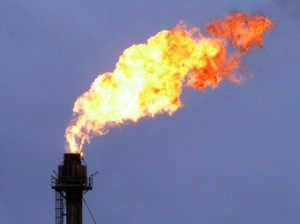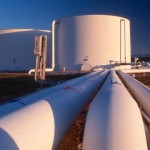 Natural gas advanced on Monday as weather forecasting models continued to show record breaking cold temperatures in many densely-populated US areas.
Natural gas advanced on Monday as weather forecasting models continued to show record breaking cold temperatures in many densely-populated US areas.
On the New York Mercantile Exchange, natural gas for delivery in February surged by 1.57% to $4.372 per million British thermal units by 09:20 GMT. Prices shifted in a daily range between $4.375 and $4.314 per mBtu. The energy source declined 0.4% in the last 5-day period, after losing 1.9% the previous week. However, prices settled 26% higher last year, the best performance since 2005 and second straight annual advance.
Continuing cold weather
NatGasWeather.com reported on Monday that a major Arctic blast continues to sweep across the central and eastern US, bringing record-breaking cold temperatures. They are expected to eventually push south and southeast, including Florida. The website reported that high temperatures across the Midwest will hardly reach 0-5 degrees Fahrenheit during the next 5-7 days, while the Northeast will see single digits and teens. A strong low pressure system continues to develop along the front and will lead to snowfall over the Midwest, parts of the Mid-Atlantic, and all of the Northeast through this morning. Very strong winds will probably lead to wind chills. Natural gas demand will be very high during the next few days and could lead to record withdrawals.
According to NatGasWeather.com, temperatures are expected to moderate in the latter days of the week as the cold pushes off the East coast and retreats into Canada. A warming trend is projected to have developed by the upcoming weekend, which would ease demand for natural gas.
However, extended forecasts show the period of mild weather will give way to a new cold blast around January 13th. Cold air is expected to push through the Rockies on the next day and then into the Plains and eastern US the following days. Freezing temperatures and snowfall could again push deep into the southern US, including northern Texas and the Tennessee Valley. The cold outbreak wont be as impressive as the outbreak during this week, but some pretty chilly temperatures might be expected, which would again lead to a period of above normal nat gas and heating demand for much of the central and eastern US.
According to AccuWeather.com, readings in Chicago will bottom at 13 degrees Fahrenheit on January 8th, 5 below usual, while the low in New York will hit 21 degrees, below the average of 27 degrees. Temperatures in Boston are expected to fall to 20 degrees Fahrenheit, 5 below normal.
When cold weather is expected, natural gas surges as increased electricity demand to power air-conditioning calls for more supply of the fuel, which is used for a quarter of U.S. electricity generation. Above-average readings in the winter season have the opposite effect. Consumption usually picks up from November through March. According to the Energy Information Administration, power generation accounts for 32% of U.S. gas demand and 49% of U.S. households use the energy source for heating.
EIA weekly US gas inventories report
The Energy Information Administration reported on Friday the first below-average decline in US natural gas inventories in five weeks. Supplies fell by 97 billion cubic feet in the week ended December 27, short of expectations for a decline of 126 bcf. This was below the five-year average drop of 121 billion cubic feet and less than last year’s 126 bcf withdrawal during the comparable period.
Total gas held in underground storage hubs equaled 2.974 trillion cubic feet as of December 27th, 15.9% below last year’s 3.536 trillion stored. The deficit to the five-year average narrowed to 8.9% from the preceding week’s record 9.2%.





